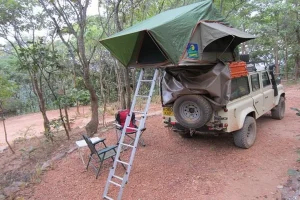Europe’s Last Untamed Frontiers: Where to Find True Wilderness in the 21st Century

When most people picture Europe, they think of famous capitals: Paris with its Eiffel Tower, Rome with its ancient ruins, or Barcelona with its buzzing tapas bars. And sure, those spots are iconic for a reason. But what if you’re craving something different, something wilder, quieter, and more remote? Believe it or not, Europe still has corners where nature feels raw and untamed, places that can make you feel like you’ve stepped off the edge of the map.
In this article, we’re not talking about crowded piazzas or Instagram-famous cafés. We’re going deeper, into icy archipelagos, windswept islands, hidden mountains, and places where you might share the landscape with more animals than humans. Ready to explore Europe’s wild side? Let’s dive in.
The Arctic Circle – Where Ice Meets Infinity
If you’ve ever wondered what it feels like to stand at the edge of the world, the Arctic Circle gives you that answer. Here, silence stretches farther than you can imagine. Mountains plunge into glassy fjords, and glaciers gleam under a midnight sun that refuses to dip below the horizon. It’s a place that challenges your sense of time and space.
Svalbard and Spitsbergen, Norway’s northernmost archipelago, might just be the wildest spots in Europe. Polar bears roam the ice, Arctic foxes dart across the tundra, and reindeer graze on mossy plains. On the cliffs above, thousands of seabirds wheel and cry, their calls echoing through fjords that feel both majestic and eerie.
And here’s the thing, this isn’t just a destination for hardcore explorers anymore. These days, travelers looking for a deeper connection with the polar north can actually venture here in comfort. Some travelers choose an cruise Arctic journey, gliding past glaciers and polar landscapes while still enjoying the comfort that makes long days in the wild feel inviting. Imagine watching the midnight sun paint the sky in gold and pink tones while sipping hot coffee on deck. Not bad, right?
What makes the Arctic Circle truly special is its unpredictability. You might set out hoping to spot polar bears and instead find yourself mesmerized by the light, how it shifts, bends, and lingers. Or maybe it’s the silence that grabs you, that kind of thick, heavy quiet you only find in places untouched by traffic, chatter, or modern buzz. Either way, it’s unforgettable.
The Scottish Isles – Windswept Solitude
From the icy north, let’s head west to the rugged Scottish Isles. If the Arctic is dramatic in its icy vastness, the Scottish Isles are wild in a softer, more weathered way. Think cliffs battered by stormy seas, rolling green hills dotted with sheep, and villages that feel like they’ve been tucked away for centuries.
Places like the Outer Hebrides, Orkney, and Shetland are rich in both solitude and story. You’ll find Iron Age ruins, Viking heritage, and stone circles that seem to hum with history. But beyond the culture, it’s the landscapes that steal the show. Seabirds cluster on cliffs so steep it makes your stomach flip just looking at them, while beaches stretch out with sand so white you could mistake it for the Caribbean, until the cold Atlantic wind hits your face.
The Scottish Isles aren’t the easiest places to get to, and that’s exactly the point. Traveling here takes effort, but the reward is a kind of peaceful isolation that’s hard to find anywhere else in Europe. No neon signs. No big crowds. Just raw coastline and skies that seem to stretch forever.
The Carpathian Mountains – Europe’s Forgotten Forests
Now let’s swap islands for mountains. The Carpathian range, running through countries like Romania, Poland, and Slovakia, is often overlooked. And that’s surprising, because it’s home to some of the most expansive forests left in Europe.
This is the land of brown bears, wolves, and lynx, animals that disappeared from much of the continent centuries ago but still thrive here. Trek through the forests of Transylvania (yes, that Transylvania), and you’ll find yourself in landscapes straight out of a storybook. Towering trees, misty valleys, and trails that feel like they could go on forever.
But it’s not just about nature. The Carpathians are rich with folklore, from Dracula legends to tales of mountain shepherds living simple, rugged lives. Villages here feel timeless, with wooden churches, horse-drawn carts, and traditions that have survived modern change.
So, why don’t more people come? Partly because these mountains don’t have the same flashy marketing as the Alps or Pyrenees. But that’s also their charm. Hike a trail here, and you might not see another soul all day, unless you count the bears.
Lapland, Finland – Endless Light, Endless Snow
Lapland is another one of those places that redefines wilderness. Straddling northern Finland, Sweden, and Norway, it’s a land of extremes. In summer, the sun never sets, washing the tundra in soft golden light that lasts for weeks. In winter, darkness takes over, broken only by the flickering green curtains of the Northern Lights.
But Lapland isn’t empty, it’s alive with culture. The Sámi people, indigenous to the region, still herd reindeer across these vast landscapes, keeping alive traditions that stretch back centuries. Spend time here, and you’ll quickly learn that wilderness isn’t just about scenery, it’s about people who know how to live in harmony with it.
What’s striking about Lapland is its quiet. Whether you’re snowshoeing across a frozen lake or sitting by a fire in a remote lodge, you’re reminded of how rare silence has become. And yet, it’s in that quiet that you start to notice things: the crunch of snow underfoot, the distant call of a bird, the subtle shift of light on the horizon.
It’s the kind of place that makes you slow down, whether you planned to or not.
The Faroe Islands – Nature’s Raw Architecture
Tucked between Iceland and Norway, the Faroe Islands are like a secret scattered across the sea. Rugged cliffs rise straight from the water, waterfalls tumble directly into the ocean, and tiny turf-roofed houses cluster in valleys that look too dramatic to be real.
Life here has always been shaped by nature. Fishing villages still thrive, sheep graze across impossibly steep slopes, and the weather can shift from sunshine to fog to rain in the space of an hour. It’s wild, yes, but it’s also deeply human, a place where small communities have learned to live with, not against, the elements.
For photographers, the Faroes are a dream. For travelers, they’re a reminder that not every beautiful spot is packed with tourists. Getting here takes a bit of planning, but that’s part of the adventure. And once you arrive, the sheer drama of the landscape makes every effort worth it.
Conclusion – Finding Wildness in Europe Today
So, here’s the big question: Is Europe still wild? The short answer is yes. You just have to know where to look. From the icy silence of the Arctic Circle to the windswept Scottish Isles, from the forgotten forests of the Carpathians to the golden tundra of Lapland and the raw cliffs of the Faroes, there are still frontiers here that feel untouched, untamed, and unforgettable.
And maybe that’s what makes these places so special. In a world that feels increasingly mapped, tagged, and posted online, stepping into real wilderness reminds us of something deeper. That nature isn’t just a backdrop for photos, it’s a force that humbles us, inspires us, and challenges us to see the world differently.
So next time you plan a trip to Europe, don’t just stick to the big cities. Take a chance on the wild side. Who knows? You might just find yourself standing in silence, staring at an endless horizon, realizing this is exactly what you’ve been looking for.








